Religion: Bible
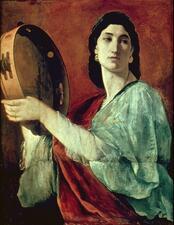
Miriam: Bible
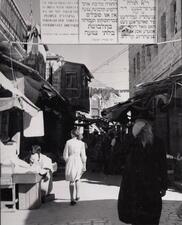
Modesty and Sexuality in Halakhic Literature
Though it is not mentioned in the Bible, modesty (zeni'ut) has become a significant part of modern halakhah, especially in the realm of sexuality. For women, sexual modesty means covering up their bodies. For both men and women, modesty also entails certain behavioral rules. These modesty rules ensure that sex happens in a way that is deemed proper, in the right time and place.
Mother of Micah: Bible
The story of Micah’s mother in Judges 17 is short, but it offers a key insight into ancient Israelite women’s important role as a leader in household worship.
Mother of Samson: Bible
Though her name is never mentioned, Samson’s mother plays a vital role in shaping her son, one of the greatest among the Judges. When notified by a divine messenger that her son must be a Nazirite, she herself keeps the Nazirite vows, ensuring that he could grow up to become a hero to Israel.
Naamah: Bible
Naamah is one of only three women included in the genealogies of the early chapters of Genesis. No vocational role is ascribed to Naamah; however, her name may signify that she is the archetypal founder of vocal music.
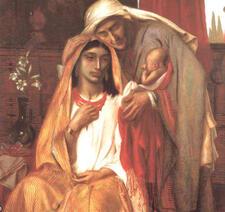
Naomi: Bible
Naomi is featured prominently in the Hebrew Bible and is portrayed as a woman who both challenges and conforms to patriarchal expectations. Analyses of Naomi from a modern feminist lens include varied interpretations of her actions, but she nevertheless dominates the stories in the Book of Ruth and effectively controls the situations of which she is a part.

Naomi: Midrash and Aggadah
Midrash portrays Naomi favorably, referring to her as righteous and significant. The Rabbis emphasize her dedication to her faith and her commitment to supporting her gentile daughter-in-law, Ruth. She guides Ruth through her conversion, encourages Ruth to maintain her devotion, and raises the child to whom Ruth gives birth.
Nature of Women
Necromancer of Endor: Midrash and Aggadah

Orpah: Midrash and Aggadah
The Rabbinic expansion of the story of Oprah paints her in a generally unfavorable light. This dislike is based on Orpah’s comparison to Ruth, in which Orpah is portrayed as the negative version of her sister-in-law. Orpah’s naming reflects the description that she is promiscuous and brazen.

Peninnah: Bible
The second wife to Elkanah in the Hannah narrative, Peninnah is unloved—hence hated—but fertile. She represents a woman who accepts social paradigms without examining them, thus acting out the type of jealousy between co-wives known from the matriarchal texts of Genesis.
Post-Biblical and Rabbinic Women
IIn antiquity, the treatment of women drew from patriarchal biblical traditions. Despite a few notable exceptions, women had minimal legal rights but were active participants in alternative Jewish sects and could hold office. As rabbinic material was codified, control over women increased, although the literature was not exclusively restrictive towards women.
Puah: Bible
Puah and Shifrah were the midwives who defied Pharaoh’s orders and allowed Israelite women to birth their sons in safety. It is not clear whether the midwives were Egyptian or Israelite. They may have been overseers for Pharoah’s harem and held positions of honor.

Queen of Sheba: Bible
Sheba, despite the mystery of her origins, presents us with a valid memory of women who managed to carve out high-ranking positions for themselves in worlds dominated by men. An independent woman ruling a fabulously wealthy Arabian or African kingdom to the south of Judah, this unnamed queen appears in one of the many stories emphasizing the grandeur of Solomon’s court and his international reputation for extraordinary wisdom.

Rachel: Bible
The younger daughter of Laban and wife of Jacob, Rachel is the mother of Joseph and Benjamin, who become two of the twelve tribes of Israel (Gen 35:24; 46:15–18). Rachel, who died young, becomes an image of tragic womanhood. After the biblical period, “Mother Rachel” continued to be celebrated as a powerful intercessor for the people of Israel.
Rahab: Bible
A Canaanite woman living in Jericho, Rahab is a prostitute who is also a biblical heroine. Rahab, who begins as triply marginalized (Canaanite, woman, and prostitute), moves to the center as bearer of a divine message and herald of Israel in its new land. She is remembered in Jewish tradition as the great proselyte, as ancestress of kings and prophets, and, in the New Testament, as ancestress of Jesus.

Rebekah: Bible
Rebekah is the second matriarch in Genesis and shares two problems with Sarah, the first matriarch: barrenness, and being passed off as her husband’s sister. But her story is more extensive; she is a dynamic character in a long narrative describing how she becomes Isaac’s wife. Her agency continues when she bears twins and secures the birthright for her favored son.
Rizpah: Bible
Rizpah is the concubine of Saul, the first king of Israel. She has two sons, one of whom briefly takes the throne. However, both of her children are killed by David and she helps ensure that their bodies get the correct burial.
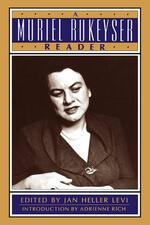
Muriel Rukeyser

Ruth: Bible
Ruth’s story centers around her relationship with her mother-in-law Naomi and her marriage to Boaz. She struggles as a Moabite immigrant in Judea and is often forced to defer to both Boaz and Naomi. Although modern analyses both criticize and celebrate her actions, she is exalted in the Bible for her devotion and as the great-grandmother of David.

Ruth: Midrash and Aggadah
Midrash views Ruth very positively, describing her as beautiful, modest, and virtuous. The Rabbis also link Ruth with other revered women, such as Sarah and Rebekah, furthering her portrayal as an exemplary biblical woman. Despite her mother-in-law’s suspicion about the circumstances of her conversion, the midrash clarifies that Ruth converted based solely on her beliefs.
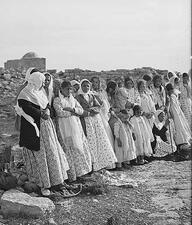
Samaritan Sect
Sarah/Sarai: Bible
Originally named Sarai, Sarah is the ancestress of all Israel and the wife of Abraham. Barren for most of her life, she gives birth to Isaac at 90 years old, and after securing his position as Abraham’s heir, she largely disappears from the story of Genesis.
Sarah: Midrash and Aggadah

Second Temple Reception of Women in Tanakh
Second Temple discourse on women and gender is grounded in biblical interpretation and everyday life and, as such, has the potential to shed light on tumultuous debates about what different communities deemed problematic, acceptable, ideal, and anomalous with respect to a woman’s role in society. A selection of Second Temple texts envisioning Dinah, Miriam, and Sarah indicates these varied perspectives, as well as how these figures were used to promote the ideologies of the particular communities the texts represented.


